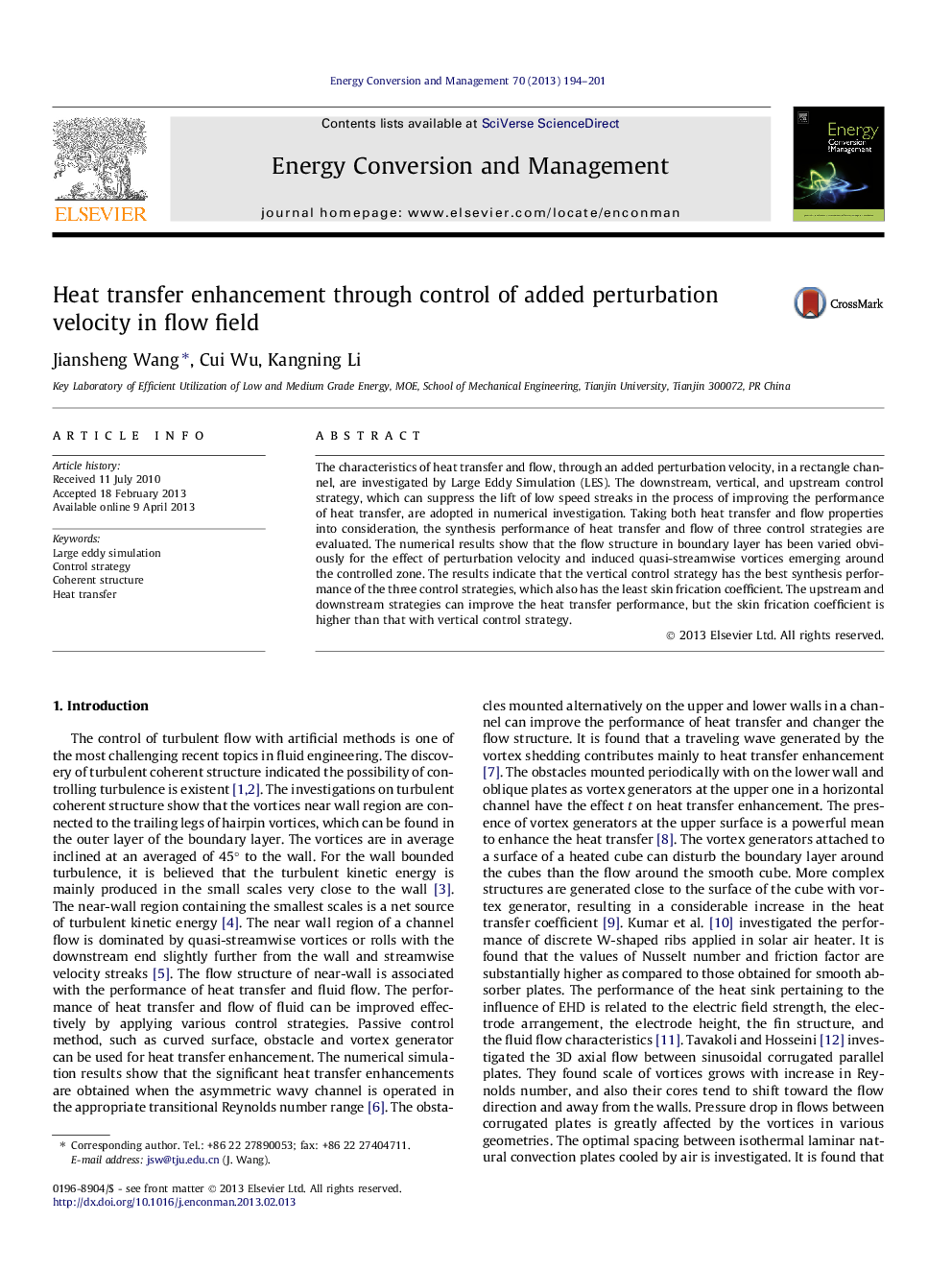| Article ID | Journal | Published Year | Pages | File Type |
|---|---|---|---|---|
| 760936 | Energy Conversion and Management | 2013 | 8 Pages |
The characteristics of heat transfer and flow, through an added perturbation velocity, in a rectangle channel, are investigated by Large Eddy Simulation (LES). The downstream, vertical, and upstream control strategy, which can suppress the lift of low speed streaks in the process of improving the performance of heat transfer, are adopted in numerical investigation. Taking both heat transfer and flow properties into consideration, the synthesis performance of heat transfer and flow of three control strategies are evaluated. The numerical results show that the flow structure in boundary layer has been varied obviously for the effect of perturbation velocity and induced quasi-streamwise vortices emerging around the controlled zone. The results indicate that the vertical control strategy has the best synthesis performance of the three control strategies, which also has the least skin frication coefficient. The upstream and downstream strategies can improve the heat transfer performance, but the skin frication coefficient is higher than that with vertical control strategy.
► Three strategies which restrain the flow drag in heat transfer are proposed. ► Added perturbation induces quasi-streamwise vortices around controlled zone. ► The flow and heat transfer features depend on induced quasi-streamwise vortices. ► Vertical strategy has the best synthesis performance of three control strategies. ► Synthesis performance with control strategy is superior to that without strategy.
